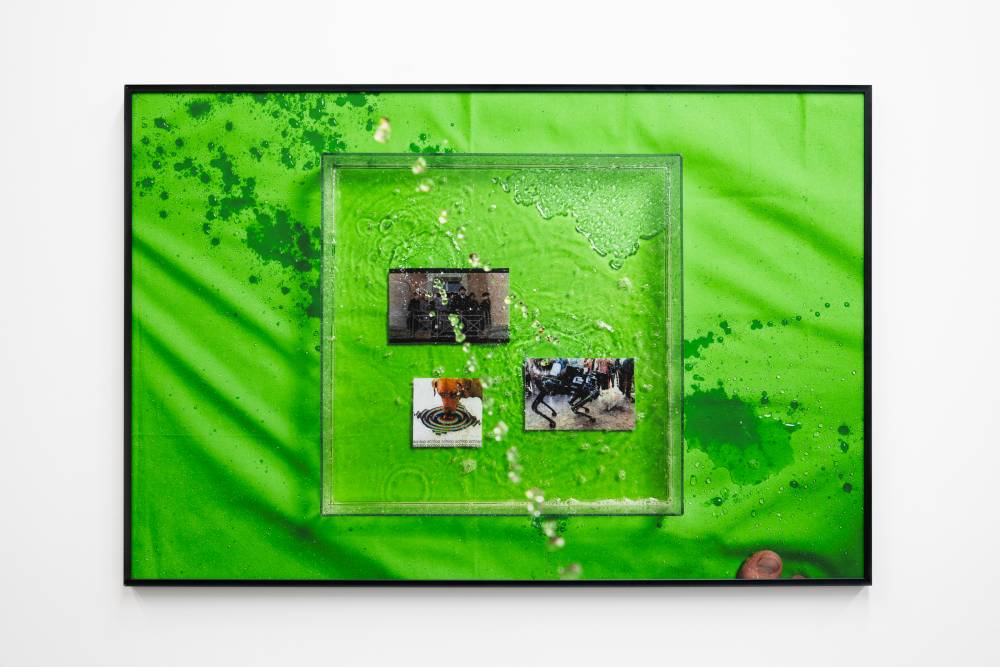A journal for storytelling, arguments, and discovery through tangential conversations.
Tuesday, October 14, 2025
|
Christopher Lacroix
Whenever I see Alex Gibson’s work installed in a white cube I feel like I am seeing something naughty—something that wouldn’t be on pristine walls if everyone admitted they knew exactly what they were looking at. This is not to say that Gibson’s work is so heavily coded that a viewer needs to be deeply ingrained in a subculture to understand its signifiers. We know why the string of saliva off the pretty man’s face is so thick; we know what the streaming liquid aimed onto images of dogs is; we know how the silicone tail is affixed to the crawling man’s backside. All one needs is the slightest of dirty minds.
And yet, the affective pull of Gibson’s work isn’t solely its salacious content. The eroticism of the images—mostly appropriated from film, pornography, and archives, then recontextualized or rephotographed—is obscured by his material choices. High-gloss resin covers a grid of dingy-quality laser prints of low-resolution screen grabs, undoing the gallery lights’ function and creating a near impenetrable glare. Mirrors are used to produce depth where there isn’t any, refracting light into seemingly unnatural colour blocks. Gibson doesn’t make it easy for us to understand what we see.
Queerness exists in Gibson’s work both erotically and anti-normatively. The eroticism of Gibson’s work refuses the sexless respectability championed by gays and lesbians hoping to assimilate into the mainstream. And yet, it demonstrates a cogent understanding of how queerness stretches beyond non-hetero sex practices; that it is in opposition to broader structures of oppression.
